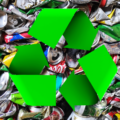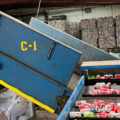Ball’s ’50 States of Recycling’ Report: An updated look at the state of sustainability in the U.S.
Eunomia Research & Consulting and Ball Corporation have released a recent report called “50 Recycling States,” which is based on a first-of-its-kind original assessment to compare different U.S. states in terms of their handling of common packaging materials. Data on nationwide generation, recycling and disposal rates were used to reach these conclusions. Some of the main findings include:
Of the ten states with the highest recycling rates, nine have deposit return systems or refunds for recycling bottles, also known as bottle bills.
Although only 27% of the U.S. population has states that offer recycling rebates, they represent a much higher percentage of total packaging recycled. Specifically, they account for 47% of all aluminum cans and glass bottles recycled, as well as 61% of all PET bottles recycled. This demonstrates the importance and effectiveness of the rebate system in promoting recycling in the country.
States that offer recycling rebates manage to recycle 34% of their packaging, excluding fiber and flexible plastics (FFP), by creating closed markets where materials are fully recycled, either through cans or bottles. In contrast, states that do not have this type of reimbursement only recycle 7% of their containers.
Globally, it is estimated that the value of material discarded in landfills reaches US$2.6 billion, which is equivalent to only 32% of the total possible amount that could be used each year. Each year, approximately $6.5 billion of materials are wasted in landfills, but if better recycling practices were implemented, that amount could be recovered.
In recent years, recycling rates across the United States have not shown significant improvement and, in some cases, have even declined. One of the main reasons is the pandemic and the closure of many recycling centers. Currently, only 45.2% of aluminum cans are recycled in the country. If this rate can be increased to 90% by 2030, it could significantly reduce greenhouse gas emissions (equivalent to taking more than 17 million vehicles off the road) and stimulate the country’s economy.
The most recent report ranks different U.S. states according to their recycling rates, while also analyzing the benefits of implementing policies such as recycling rebates and extended producer responsibility (EPR), where producers are responsible for managing the product throughout its life cycle. By implementing both policies together, states were found to achieve higher recycling rates, which maximizes closed recycling (i.e., using recycled materials to produce new products) and, consequently, has positive socio-environmental and economic impacts in the United States.
“The recycling rates in our report represent the actual recycling rate, versus the collection rate, meaning that this rate is not what is collected for recycling, but what is available to become new products. Recycling rates in many states are still measured in terms of what is collected for recycling, so to allow for a “like-for-like” comparison between states, the collection rates have been adjusted to show the actual recycling rate. Having a true assessment of recycling rates will allow us to better understand what policy and program measures are needed to capture more quality material, increase circularity, reduce our need for virgin materials, and therefore help protect the planet,” said Sarah Edwards, director of Eunomia North America.
Based on 2021 data, the states with the highest recycling rates, excluding FFP, are Maine at 65%, Vermont at 51%, Massachusetts at 48%, Iowa and Oregon both at 45%, New York at 44%, California at 41%, Michigan at 40%, New Jersey and Connecticut both at 39%.
In 2021, the states with the lowest recycling rates (not including FFP) were West Virginia at 2%, Louisiana at 4%, Tennessee at 5%, Alaska and South Carolina at 6%, Mississippi at 6%, Oklahoma, Alabama and Texas at 8%, and Colorado at 11%.
The total value of recycling in the United States is estimated to be $35 billion when gross value, industry-related labor income and greenhouse gas emission reductions are taken into account. This benefit is comparable to taking 17 million vehicles off the road. However, if effective recycling policies are implemented at the national level, such as a combination of the Extended Producer Policy and Recycling Rebates, this value could double to $70 billion annually.
According to Ball Corporation President and CEO Daniel W. Fisher, many consumers believe they are doing the right thing when they put their cans or bottles in the recycling garbage can, but this does not guarantee true recycling. To achieve an efficient system where recyclable materials are converted into new products, a well-designed policy that provides incentives and adequate infrastructure is needed to make recycling a simple, convenient and affordable process for all. The ’50 States of Recycling’ report should serve as a guide for policy makers and supply chain stakeholders to develop effective recycling policies and programs. It is crucial to work together to create efficient recycling systems that will benefit the future. Proper planning and cooperation in programs and policies are critical to achieving the best results in the United States.














